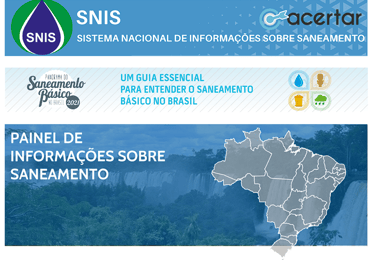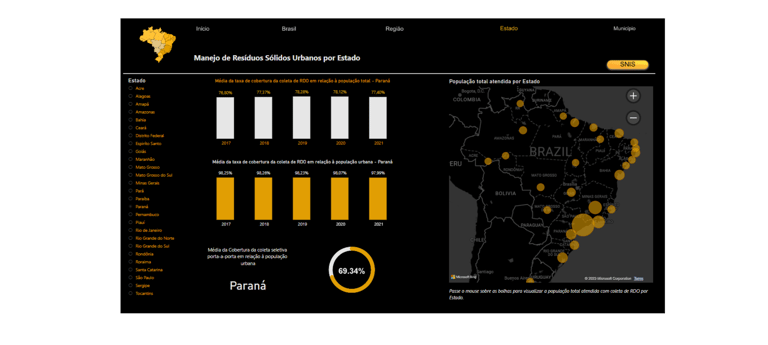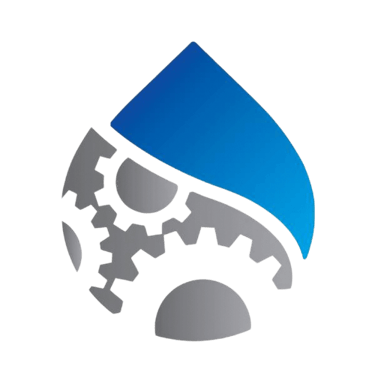SNIS - National System of Information on Basic Sanitation
A Detailed Analysis of the National System of Information on Basic Sanitation (SNIS) in the Brazilian Context
SANEAMENTO
Bruno Camargo
12/19/20235 min read


The National System of Information on Basic Sanitation (SNIS) emerges as a fundamental component in the Brazilian scenario, playing a crucial role in the collection, organization, and dissemination of data related to basic sanitation. Its main function is to consolidate information from various entities, such as sanitation companies, regulatory bodies, and governmental agencies, creating a comprehensive and reliable overview of the sector's situation across the country
The SNIS operates through a structured system of indicators that covers various dimensions of sanitation, such as water supply, collection and treatment of sewage, solid waste management, and urban drainage. This comprehensive approach allows for a holistic understanding of the sanitation situation, contributing to the identification of gaps and priority areas
Analysis of the Relevance of Collected Data for Planning and Implementation of Public Policies
The data compiled by SNIS has a significant impact on the development and execution of public policies related to basic sanitation. The relevance of this information manifests in various ways:
Informs Decision-Making: SNIS data provides a solid foundation for strategy formulation and informed decision-making. Public managers, regulatory bodies, and sanitation authorities use this information to identify underserved areas, set goals, and allocate investments efficiently.
Progress Monitoring: Regular data collection allows for tracking progress over time. This monitoring is essential to assess the effectiveness of implemented policies, identify trends, and adjust strategies as needed.
Transparency and Accountability: SNIS contributes to transparency in the basic sanitation sector, allowing citizens, civil society organizations, and the media to track and evaluate the performance of responsible authorities. This promotes greater accountability and encourages societal participation in the quest for improvements.
Integrated Planning: SNIS's integrated approach, covering various aspects of sanitation, facilitates integrated planning. This is crucial because basic sanitation is not limited to providing clean water but encompasses sustainable waste management and proper sewage treatment, forming an interdependent system.
SNIS Structure
SNIS has a robust and well-defined organizational structure. Below, we explore the key elements that make up the SNIS structure:
1. Central Coordination:
SNIS is centrally coordinated by the Ministry of Regional Development (MDR), which plays a fundamental role in articulating and supervising the system's activities.
Central coordination establishes general guidelines, promotes integration with other agencies, and ensures the coherence of the collected information nationwide.
2. Subnational Units:
At the state level, the management of SNIS is decentralized to State Basic Sanitation Companies (CESB) and other state agencies responsible for the sector.
Decentralization allows for a more precise adaptation to local realities, ensuring a more contextualized and effective data collection.
3. Executing Entities:
Executing entities, such as sanitation companies and regulatory bodies, play an active role in feeding the system with accurate and updated information.
Collaboration among these entities is essential to ensure the comprehensiveness and representativeness of the data on a national scale.
The structure of SNIS is characterized by a systemic and collaborative approach, with central coordination, subnational units, executing entities, standardized indicators, and a consistent methodology. This robust structure is essential for the success of SNIS in its mission to provide crucial information for the planning and improvement of basic sanitation policies in Brazil.
Data Collection and Updates
The process of gathering information and the frequency of updates are key elements that add dynamism and relevance to the National System of Information on Basic Sanitation (SNIS). With the goal of maintaining a precise and up-to-date overview of basic sanitation in Brazil, the SNIS adopts a careful and structured approach to data collection.
1.Information Collection:
Active Participation of Executing Entities: Executing entities, such as sanitation companies and regulatory agencies, play a central role in information collection. They provide data on various indicators, primarily on water supply and collection and treatment of sewage, but also on solid waste management and urban drainage.
Standardized Methodology: Information collection is guided by a standardized methodology, ensuring consistency and uniformity in the data. This standardization is crucial to allow comparisons between different regions and over time.
Integration with Local Systems: The SNIS integrates with the information systems of executing entities, facilitating the collection process and minimizing potential data gaps. This integration promotes efficient and continuous data collection
2. Periodicidade das Atualizações:
Frequência Anual: O SNIS segue uma periodicidade anual para a atualização dos dados. Esse ciclo anual permite acompanhar as mudanças ao longo do tempo, identificar tendências e avaliar o progresso em relação às metas estabelecidas.
Calendário Definido: A definição de um calendário específico para a coleta e atualização de dados contribui para a organização e previsibilidade do processo. As entidades executoras e demais participantes do sistema têm prazos claros para fornecerem as informações necessárias.
Acompanhamento Contínuo: Embora a atualização seja realizada anualmente, o SNIS mantém um acompanhamento contínuo das informações. Isso possibilita uma resposta mais ágil a eventos inesperados ou situações que demandem intervenção imediata.
Avaliação da Qualidade dos Dados: Durante o processo de atualização, é realizada uma avaliação rigorosa da qualidade dos dados. Isso inclui verificações de consistência, validações e correções necessárias para assegurar a confiabilidade das informações.
In summary, the information collection process and the periodicity of updates in the SNIS are fundamental elements for the system's effectiveness. This structured and regular approach not only provides an updated view of sanitation in Brazil but also enables more efficient, data-driven management in the sector.
3.Resource Limitations:
A lack of financial and human resources can impact the effectiveness of the SNIS. Some executing entities may face limitations in the capacity to invest in information technologies, staff training, and other necessary aspects for comprehensive and quality data collection.
Summing up, the National System of Information on Basic Sanitation (SNIS) emerges as an indispensable tool in the Brazilian scenario, playing a crucial role in the collection, organization, and dissemination of essential data for monitoring and improving basic sanitation. Despite facing challenges such as underreporting and regional gaps, SNIS presents significant opportunities for strengthening, including technical capacity building, encouraging the participation of implementing entities, the use of innovative technologies, and strategic partnerships. By enhancing the quality and scope of data, SNIS not only supports informed and transparent decision-making but also positions itself as a fundamental instrument to drive effective policies and promote sustainable advancements in the basic sanitation sector throughout the country.
Challenges Faced by SNIS
1.Underreporting and Data Gaps:
One of the pressing challenges faced by the SNIS is underreporting and the presence of data gaps, especially in some regions of Brazil. This can occur due to various reasons, such as a lack of technical capacity of executing entities, underinvestment in information systems, or undervaluation of the importance of data collection..
2.Regional Heterogeneity:
The regional heterogeneity of Brazil presents another significant challenge. Some regions, especially those less developed, may have less robust data collection systems, resulting in an uneven representation in the SNIS. This makes it difficult to obtain a comprehensive and equitable view of the sanitation situation across the country.
Board Engineering and Environment holds extensive experience in handling SNIS data, including professionals who have collaborated closely with the Ministry of Regional Development to perform calculations based on the data collected by SNIS.
In the Panels section, you can find dashboards developed from SNIS data for the four axes of sanitation: water supply, sewage collection and treatment, solid waste management, and urban drainage


4. Indicators Structure:
SNIS operates with a broad range of indicators covering various aspects of basic sanitation, including water supply, sewage collection and treatment, solid waste management, and urban drainage.
These indicators are carefully selected to provide a comprehensive and detailed overview of the sanitation landscape in the country.

